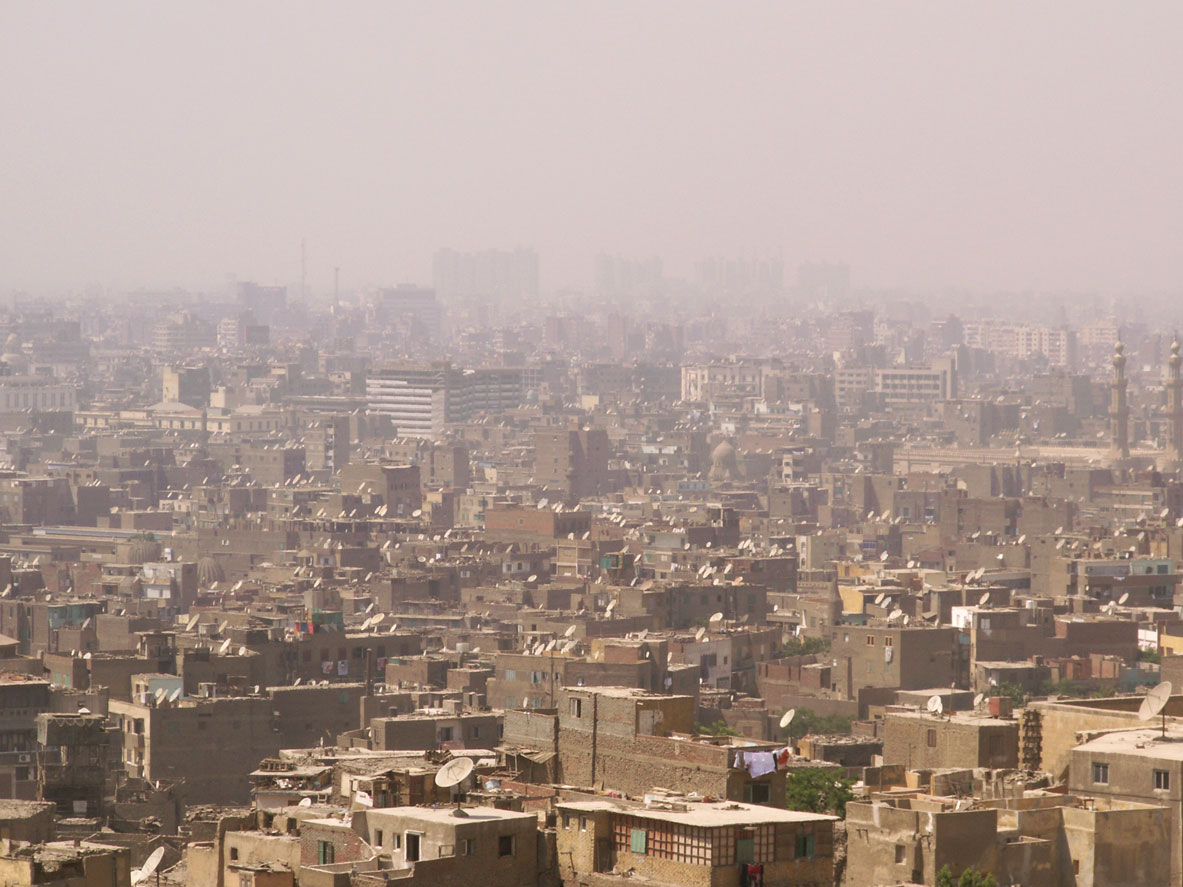In one of its star-studded advertising campaigns, real estate development company Zed showcases its two flagship compounds, each located on the opposite side of the Cairo metropolis. While half of the celebrities in the ad tout the New Cairo compound and its amenities, the other half list the benefits of residing in the one in Sheikh Zayed.
There is, however, one thing both sides agree on: they have all they need where they are. Their response to even the suggestion of traversing the city to visit the other compound: “Bet’hazzar, bet’hazzar!” – “You must be joking!”
Packaged in the form of an upbeat song, this ad likely means nothing more than to flaunt the convenience and self-sufficiency of Zed’s two projects. But hidden behind the humour and the compelling visuals, there is a reality weighing on many of Cairo’s residents.
Many cities in one
When new developments began to sprout in the desert areas around the older parts of Greater Cairo in the 1980s and 1990s to accommodate a rapidly growing population, some of the city’s inhabitants began to disperse, gradually creating a small exodus from the centre to the fast-growing peripheries.
The sprawling megacity that is Cairo has long since encompassed area in three governorates: Cairo itself, neighbouring Giza to the west, and Qaliubiyya in the northeast. Today, its de facto borders are spreading deeper into these governorates, even reaching into Sharqiyya and moving ever closer to Ismailia and Suez to the east – more than doubling in area compared to where it stood in the early 80s.
As the meaning of the word ‘Cairo’ evolves and stretches, so too do the distances between the different areas the metropolis encompasses. A family once centred in one area is now likely to be scattered across this vast urban space, and friends once tied together by proximity must now use the many various highways that have turned into the central arteries connecting the expanding city.
Until today, the infrastructure bringing it all together is being rebuilt and renewed, but movement throughout the city remains often slow, and with inflation and price hikes, its cost is rising. Meanwhile, the means of transport that are affordable to low-income Cairenes – such as buses, microbuses, and metros – exist in a network so huge that it is virtually impossible for a traveller to reach their destination in a single trip, increasing the ultimate cost of movement.
Professor of architecture and urban design at the American University in Cairo (AUC), Momen El-Husseiny, tells Egyptian Streets that in this reality of distances and inconveniences, the difficulty and cost of getting around Cairo shape its citizens’ consciousness, affecting their decisions about social interaction.
“The assumptions related to the calculations of movement in the city, and how it accounts to what we call barriers to interaction, embed themselves inside one’s own perception of the everyday,” he explains. “Seeing a friend becomes far more than the simple matter of seeing a friend.”
Time, distance, traffic, cost, and more come into play when any plans are being made. Despite all of these various areas being considered as parts of Greater Cairo – some of which are high-end gated communities, others more affordable housing for the middle and working classes – the decision to see friends, visit family, or even take a position at a workplace, is greatly affected by the city’s expansion, not least for those with lower incomes.
Despite what it is referred to, Cairo, in El-Husseiny’s view, has become far more than a single city. In many places around the world, the over 60-kilometre trip from New Cairo to 6 October could be considered intercity travel.
As a result, many Cairenes ultimately decide against taking certain trips, the factor of proximity and ease of access having a much more significant impact on the company they keep than it once did when the city was smaller, leading some relationships to being either unconsciously neglected or inevitably demoted.
Out with the old, in with the new?
22-year-old German University of Cairo (GUC) student Hassan Tarek’s family is one that relocated from the bustling area of Mohandessin to Beverly Hills, a gated compound located on the Cairo-Alexandria desert road to the west of the city – which on days of heavier traffic can be faster to reach from Alexandria than it is from the eastern suburb of New Cairo.
Tarek’s parents and younger brother easily found their place in their new surroundings, and while his father still frequents Downtown Cairo for work, his mother and brother, whose school is close to home, rarely have any reason to go very far.
Tarek himself, however, was not as comfortable upon moving into the new environment. In search of independence and a shorter commute to campus in New Cairo, he decided to return to his family’s old apartment in Mohandessin, an area close to the city centre.
“When we moved into what is literally the desert, it’s almost as if I forgot how to communicate with people, being so remote and distant, geographically and also emotionally at one point,” Hassan tells Egyptian Streets. “Everything suddenly got easier when I came back.”
Before enrolling at GUC, Tarek went to school in Maadi, a Nileside area in the southeast of Cairo. That was where his community took shape. The majority of his friends lived in Maadi, and accordingly most of his time was spent there. Returning to Cairo’s urban core, even if not in Maadi itself, brought Tarek closer once again to the community he cherished.
To Tarek, what many consider self-sufficiency in a place like the Beverly Hills compound, is isolation – a view he feels is confirmed by his family’s reluctance to visit him in Mohandessin. Like the characters in the Zed ad, they have all they need where they are.
His younger brother, on the other hand, holds the same kind of connection with his community around Beverly Hills that Tarek holds with his community in Maadi. Within this single nuclear family, the shifting of Cairo’s communities is made visible.
Around the metropolis, similar examples of change are taking place: young adults find themselves moving away from their families in the centre to live in the peripheries, while their friends are moving to yet other peripheries dozens of kilometres away. Elderly couples may be moving into suburban satellite neighbourhoods to escape the city’s noise, losing touch with their old neighbours.
Though Hassan’s case is rare in the sense that most movement nowadays is outwards to the newly emerging satellite districts, rather than back into the heart of Cairo, contrasting his experience with that of his family and many others like them highlights the relationship between distances within Cairo and social bonds.
Since these developments are still ongoing, there is no research on the actual social impact resulting from the expansion of Greater Cairo. However, there is no question that Greater Cairo’s current population of nearly 21 million is living through a fragmentation of its previously established communities on a large scale.
Naturally, new communities usually emerge from urban expansion, however, at this moment in time, Cairenes are living through a moment where new communities are juxtaposed with old ones; change has not yet taken place so fully that the new communities have established themselves over the old ones, creating an awkward coexistence between the old and the new for many of its inhabitants.
Subscribe to the Egyptian Streets’ weekly newsletter! Catch up on the latest news, arts & culture headlines, exclusive features and more stories that matter, delivered straight to your inbox by clicking here.







Comment (1)
[…] many people will likely have to cover longer distances on average to go to work, meet friends, or go to their favorite restaurant. This is due to two factors: the distances between cities, and […]